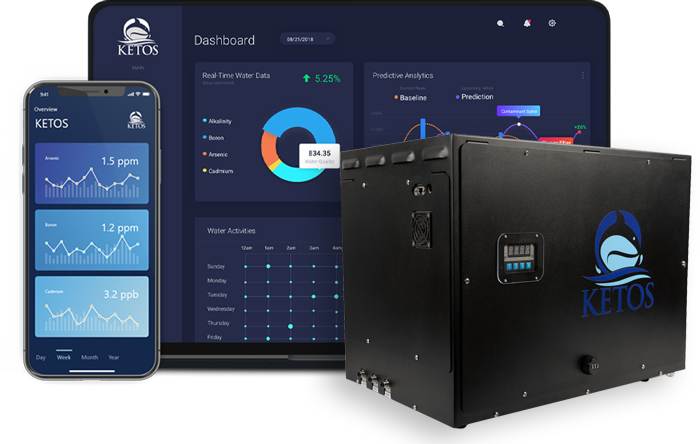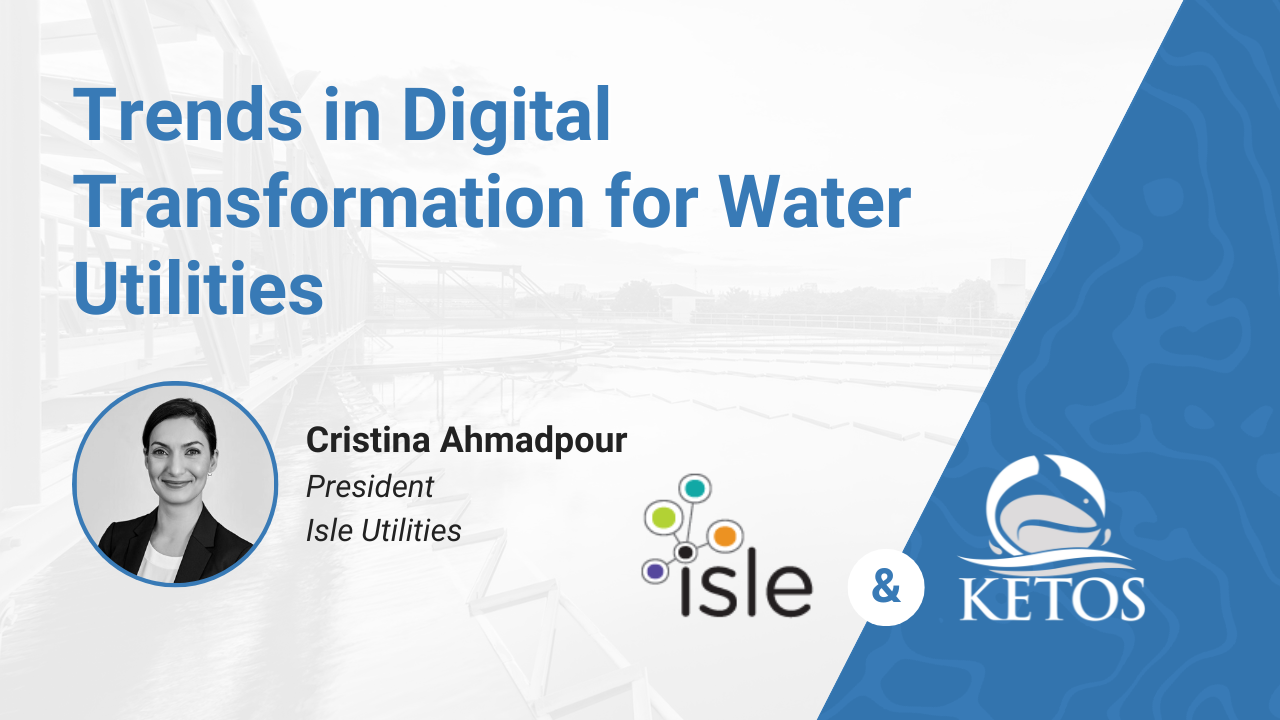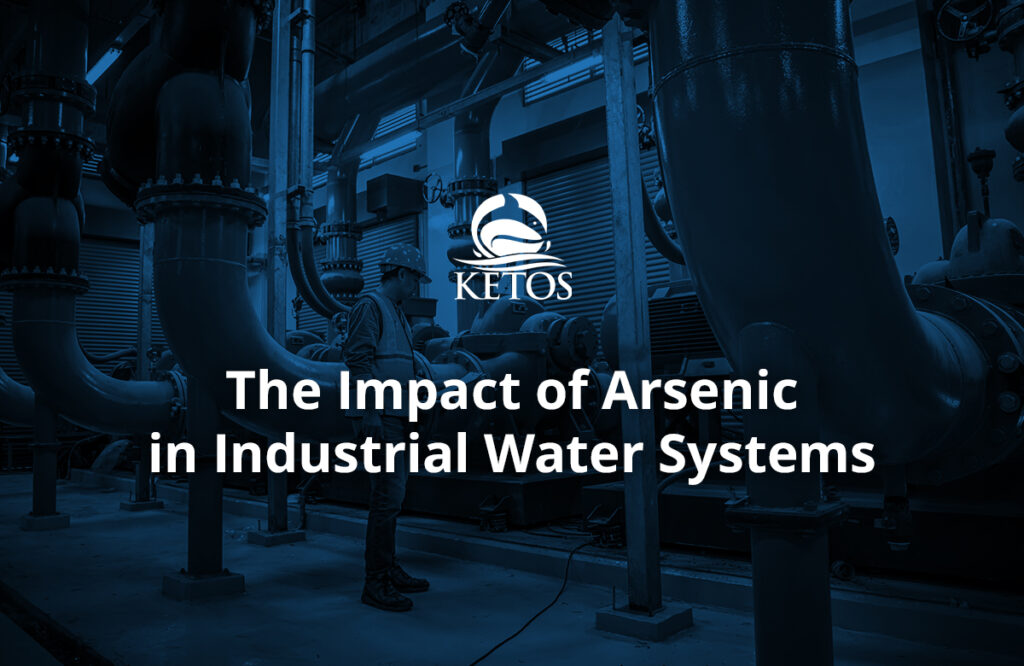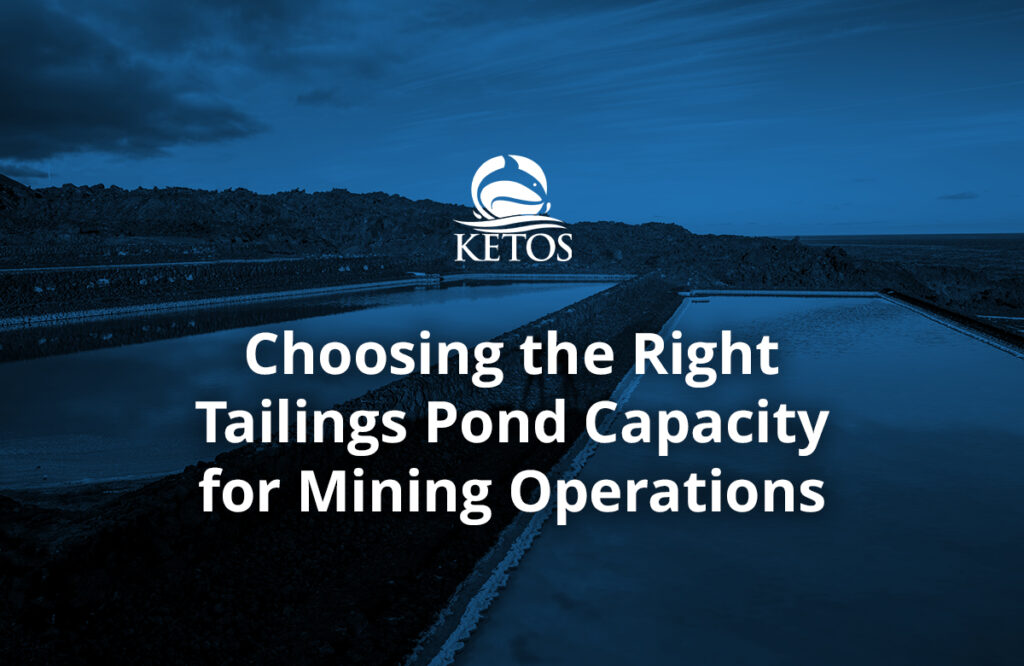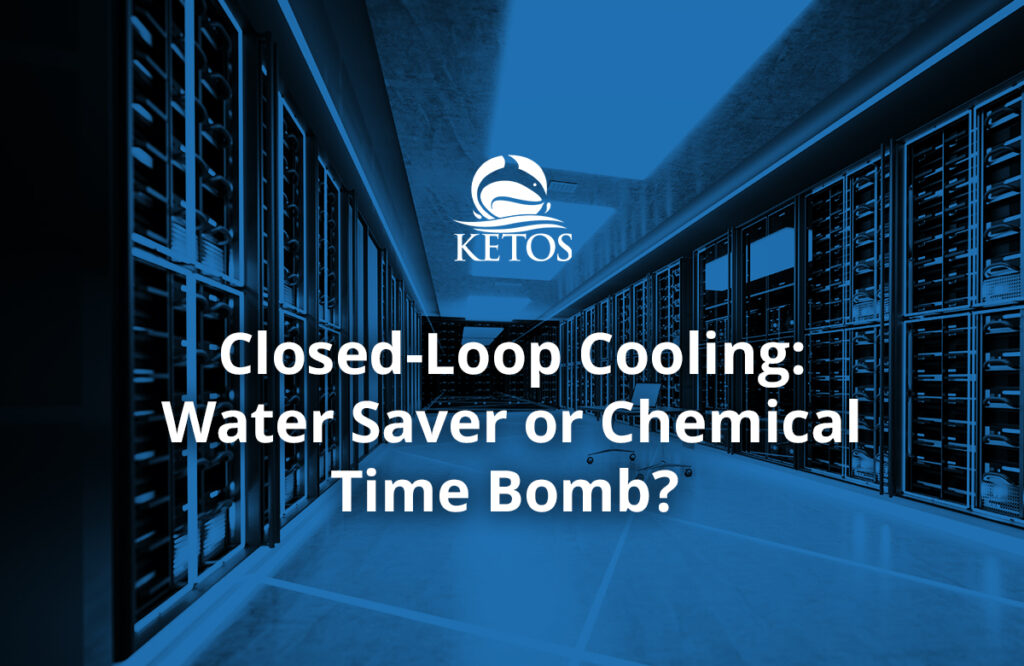In a recent webinar, KETOS CEO and founder Meena Sankaran, and Cristina Ahmadpour, President of Isle Inc., discussed the future of water, mainly in the context of water utilities. As the leader of a team supporting progressive water utilities to help them identify, evaluate, and engage with the best available solutions for water utilities, Cristina, is in a unique position to understand the current landscape and provide insights into what the future may hold.
It’s an interesting time to be a water utility. Water technology is quickly advancing and is beginning to disrupt an industry that has been traditionally slow to change. However, there are so many reasons utilities stand to benefit when them embrace digital water solutions.
Water Utilities Can (and Should) Leverage Digital Transformation
Many trends reveal themselves in the water industry and in utilities in general.
While the industry sees the changes on the horizon and mobilizing towards taking advantage of all technology can offer water, utilities aren’t looking for a singular solution. One big water industry trend is seeking more flexible and adaptable technologies. Many utilities need something that can work with their unique infrastructure and deliver results that are unique to their local requirements. However, they also need the technology, should they choose to adopt it, to be more than a one-trick pony. Solutions need to show that they can help water operators solve multiple problems at once. They also must be robust enough to be ready to change with the times as regulations and protocols shift to meet the ever-growing digital advancements in an industry not necessarily known to embrace the new.
What Digital Assets are Water Utilities Adopting?
Many utility companies, if they are considering digital transformation for their water quality monitoring, are looking for solutions that can deliver:
- automation
- visualization
- better use of data
Utilities, often dealing with limited budgets, must also discern between technology that is “nice to have” vs “must-have” when contemplating the digital transformation of their water.
While it helps no one to have fancy buttons and flashy features for the sake of adding more potential ways to use a digital asset, first and foremost, whatever the technology is must solve fundamental problems first.
For example, data is often an issue for utilities in general. While some may capture multiple data points and have an excel spreadsheet full of random numbers, data doesn’t mean much if the water operator can’t use it to action some specific task (like balancing chemicals).
The latest digital assets make it easier to capture data (more and more often in real-time). They also allow for data capture across parameters (meaning one device can now monitor for multiple water quality issues) while also providing a simple, easy-to-understand visualization of the data itself (so that operators no longer have to wait for third-party labs to transfer numbers into information and information into actionable advice).
KETOS Delivers for Water Operators Ready to Embrace Digital Transformation
With so many solutions out there, there is more and more pressure put on utilities to manage risk. Water operators unfamiliar with the digital landscape often are paralyzed by making the wrong decision into making none at all. They begin to question:
- What if the solution costs too much or more than initially assumed?
- What if the device breaks down or becomes obsolete?
- Who fixes the device, and how much does that cost?
- Will they need to swap out parts in order to keep the solution calibrated?
- Who has the in-house expertise (or the time) to babysit the new product to ensure it’s doing what it says it will?
- Do they really want another machine that will add another datapoint that they’ll ultimately have to pay more to a third party to look at?
It’s both a challenge and opportunity since adopting digital assets can ultimately deliver the efficiency and scale needed by public water providers. Still, water operators remain often overly cautious. Finding something flexible in its approach, but more importantly, easy to adopt (like KETOS), is essential.
KETOS, for example, offers:
- modularity. KETOS hardware can be placed strategically across a utility’s operations (for example, at influent and effluent points) to test water and reveal its composition at any stage of the water treatment process
- interoperability. KETOS can integrate with existing systems to bring all data to one central place in order to remove data silos.
- variety. KETOS can test for 30+ parameters (including inorganic, environmental factors, and heavy metals) in real-time.
- accuracy. Water sampling and testing from KETOS devices deliver lab-accurate results. The system self-cleans and calibrates to ensure each reading perfectly executes every time.
- timeliness. A KETOS water quality sample can be pulled at programmed time intervals and deliver results immediately, allowing water operators to react in real-time to their water quality. Alerts are available so that operators will get notified if any parameter hits a certain pre-determined threshold to help speed up reaction times.
- $0-CAPEX. Instead of paying for expensive devices up-front, KETOS is installed on-site by trained technicians and utilities pay a low monthly usage fee while getting regular daily water quality readings right to their device. KETOS also handles all maintenance, so water operators and their teams never have to worry about expensive maintenance or repairs.
- a surprisingly low learning curve. Once installed, the KETOS technician will help the water utility set up their own customized water testing regime and dashboard so that they can receive alerts and see, in real-time, how the parameters they care about are performing.
Digital Water Transformation: Offering Water Utilities Solutions at Less Expense
The need to speed up digital transformation in water utilities is growing. Whether brought on by:
- modern pressures on water supplies exasperated by climate change
- changes to existing federal, state, or local statutes
- a need to replace old infrastructure with new
- new factors (such as PFAS) that may need to be introduced as new monitoring parameters
- an upcoming influx of capital that must be spent intelligently, water operators are under renewed pressure to seek long-lasting solutions that can improve resiliency in their operations.
With KETOS, many utilities are finding a solution that checks multiple boxes and makes digital transformation that much easier to embrace within their operations. Technological solutions like KETOS are also fast becoming lighter, more modular, and less intrusive, meaning that existing infrastructure doesn’t have to be reimagined in order to get the most out of introducing a new tool. The latest and most effective solutions work with water operators to slip seamlessly into existing operations without the need to add more specialized personnel to the payroll or more up-front costs to an already constrained budget.
Want More?
During the webinar discussion, Meena and Cristina delved into some of the emerging technologies gaining traction in the water space and digital transformation trends. They also discussed what might be holding water operators in utilities back and ways that utilities can meet the moment in digital water transformation. You can view the full webinar recording here to catch all of their fascinating insights
